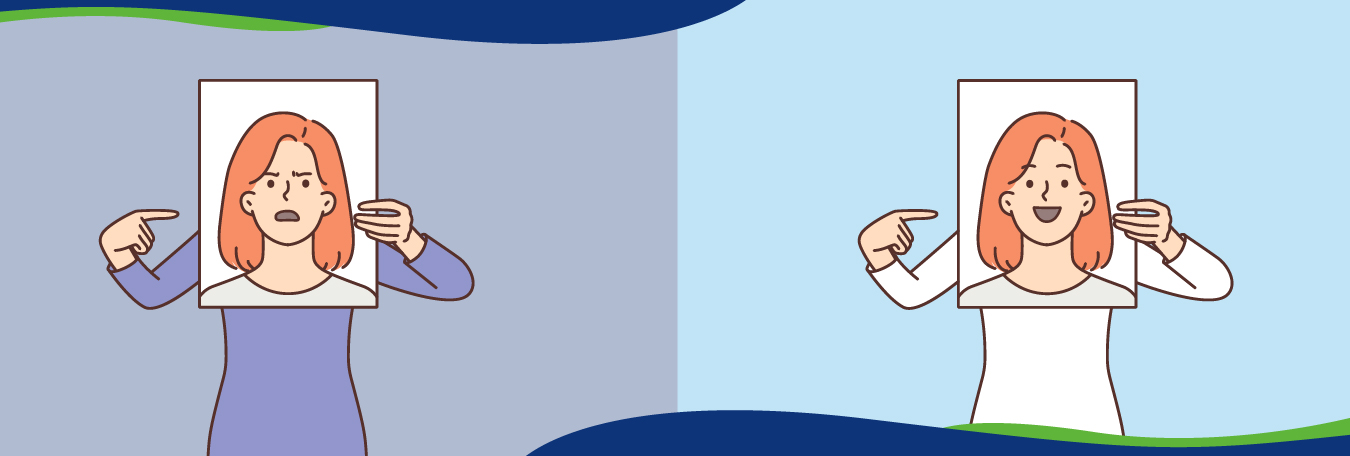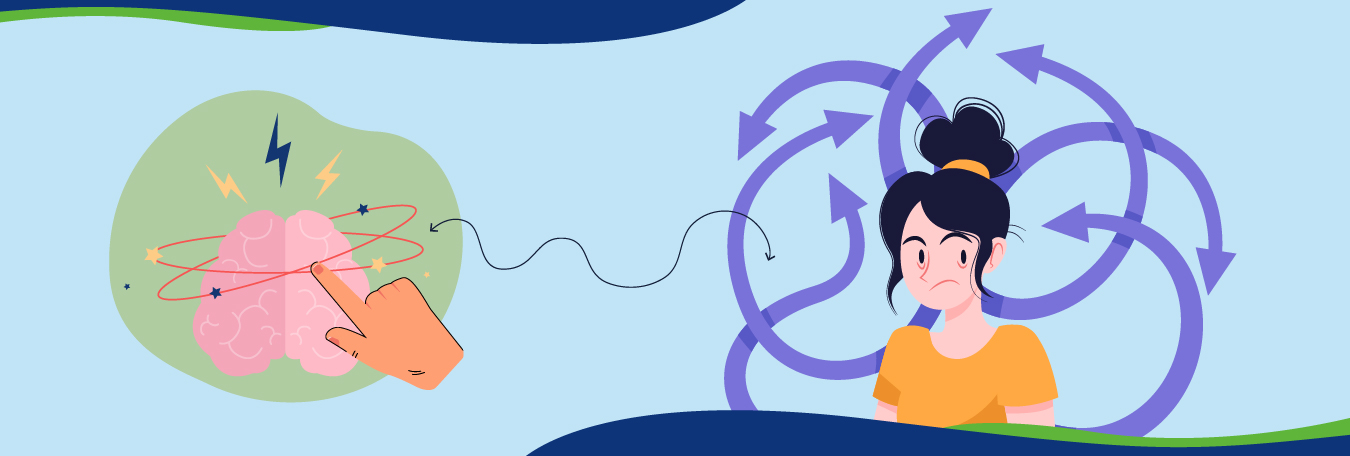What is ADHD? ADHD, also called attention-deficit/hyperactivity disorder, is one of the most common mental afflictions of children. Around 8.4% of children and 2.5% of adults have ADHD (Danielson, 2018; Simon, et al., 2009). It is also categorized as a neurodevelopmental disorder, where the “neuro” means nerves, which is why the name suggests that in an ADHD brain, the hard wiring is actually haywire. It can go well into adulthood and can be especially debilitating at that time, which is why it needs a comprehensive focus and that is exactly what we are going to do: put the spotlight on ADHD as a whole and learn as much as we can about it like absorbing knowledge about symptoms of ADHD. Let’s start:
So, What is ADHD?
As mentioned before, ADHD, which is abbreviated as attention-deficit/hyperactivity disorder, is a type of neurodivergent (neurodevelopmental disorder) condition that causes executive dysfunction. This means it affects the proper executive functioning of the affected individual as cognitive processes that are used for sustaining life are affected by ADHD. This in turn means that if you are affected by ADHD, you are unable to do important tasks that are needed to sustain life properly due to ADHD symptoms like restlessness, inability to focus, procrastination and freeze, overwhelming thoughts, inattention, and loss of interest. While the inverse is true of these ADHD symptoms, the effect is still the same in the end: executive dysfunction (Harpin, 2005). In addition to these, it can also often convert into other and much worse problems like having excessive anxiety due to ADHD as you tend to worry about the management of the symptoms described above.
Essentially, you will start to ask questions like, “What is ADHD?”. To properly understand these symptoms, we can categorize these under three different headings (What Is ADHD?, n.d.) which usually becomes evident in childhood and that is exactly what happens next but right after we talk about adult ADHD.
Read more about executive dysfunction in ADHD from here.
The Different Types of ADHD
As promised, we have listed the different types of ADHD below. While most talk about ADHD types in terms of ADHD in children because these ADHD symptoms manifest most of the time in childhood we will also elaborate on the adult ADHD versions:
The Inattentive Type
This relates to the tasks that need attention at all costs such as persistently staying on a particular task, focusing, and organization. When this type of ADHD is diagnosed, usually 5 (if you are older than 17) to 6 of these ADHD symptoms erupt:
- Careless mistakes are found in school or work-related tasks and you are unable to properly pay close attention
- Forgetfulness, most of the time the affected individual will forget important things, for example, running errands or doing daily chores
- It will be a hard task to stay focused on a given task or their related activities such as lectures, conversations, and stuff like long reading
- Distractions come easily to the affected individuals
- Displays avoidance for effort-extensive tasks such as doing research
- Leaves incomplete schoolwork, chores, or job duties because the focus is lost quickly
- Often misplace the tools needed to complete the tasks at hand, like, scissors, or homework (at school) or when they get older then things such as work files
- They tend to procrastinate while participating in an ongoing conversation (seem to be elsewhere while talking)
- They are disorganized (there’s always a mess around them) and are also unable to manage time properly. This is especially debilitating for affected individuals who have co-occurrence of OCD.
- Does not follow through with instructions properly
The Hyperactive/impulsive Type
The hyperactive types predominantly relate to excessive energy that comes with the diagnosis of ADHD. The signs of ADHD in this type are:
- Fidgeting with or tapping with feet or hands. Affected individuals also tend to do squirm a lot in the place where they are lying or sitting
- You find the affected individuals frequently not seated even if it is a classroom or an office space, where it is important to stay seated
- Climbing and running around Inappropriate places
- They feel like they are always “on the go”
- Affected individuals are extremely talkative
- They always have difficulty waiting their turn, such as while waiting in line or when they are talking
- Have a habit of interrupting or intruding on others, such as starts using other people’s things without permission or as adults or teenagers, they may take over someone’s else task without asking by intruding on it
- Always blurt out an answer even before a question that is asked of them is complete
The Combined Type
One of the best ways to answer a question like “What is ADHD?” is to understand another one of the ADHD types, the combined type, which essentially mixes criteria for both inattentive and hyperactive/impulse types by bringing the ADHD symptoms together. In addition to these aforementioned symptoms, here are the things that could also happen with either of the above types or this combined type:
- It may mimic the symptoms of other similar conditions such as learning disorders, mood disorders such as bipolar disorder, anxiety, substance use, head injuries, thyroid conditions, and the use of some medications such as steroids (Austerman, 2015).
- This type of ADHD may also co-occur with other mental conditions such as oppositional defiant disorder or conduct disorder, anxiety disorders, and learning disorders (Austerman, 2015).
- ADHD when mixed with something like seasonal affective disorder (a type of seasonal depression) often causes problems like psychosis.
For a comprehensive look at the symptoms you can check our different blogs on ADHD symptoms such as, Can depression cause ADHD, ADHD burnout, ADHD and Christmas
Other Major Symptoms That You Should Know About
When someone asks, what is ADHD, then it is instantly recognizable for people to explain what it is essentially. Other than the ADHD symptoms described above, there are also very recognizable symptoms associated with ADHD, so let’s see what are these:
-
Time Blindness in ADHD
It is an inability to sense how much time has passed. This can literally interfere with managing time properly and make nearly every aspect of a person’s life more difficult as it often leads to challenges in punctuality and planning.
-
ADHD Paralysis
ADHD symptoms have a tendency to overwhelm the affected individual with their emotions, environment, or information overload, and even their internal monologue. Due to this they can’t even function and think properly, making them freeze right then and there.
For a greater overview on these symptoms, you can check two of our blogs on it: ADHD paralysis and How to combat ADHD paralysis.
-
Hyperfocus in ADHD
While it is one of the rarest symptoms of ADHD, but also quite possibly a positive one. Although an excess of this one is also bad (as once the hyperfocus ends, you might lose interest in whatever you are doing and may leave it incomplete), it can help you learn a new skill or help sustain important tasks that you had been avoiding before, it is done right! For that, you can search for how to focus with ADHD and follow the tutorials.
Know more about hyperfocus in ADHD from here!
ADHD Symptoms in Kids
ADHD predominantly arises in childhood and the ADHD symptoms become evident during the ages of 3 (Yes! There can be signs of ADHD in toddlers) to 12. These symptoms at the most, usually become evident in children of school age. Additionally, ADHD symptoms tend to arise differently in all children, meaning these symptoms will manifest differently than those in other children who also have ADHD. You may notice a child with ADHD may fidget and squirm a lot. You’ll also notice that they have more energy than usual or you will notice that these symptoms will be causing havoc and will affect how they form relationships, how they are doing at school (or work in the future), and how they survive the day-to-day task or chores that are allocated to them by their parents or guardians.
For a more comprehensive look at ADHD in teenagers, have a look at this blog.
Adult ADHD
Adult ADHD symptoms are similar and yet also different from the ADHD symptoms in kids. We talk a lot about signs of ADHD in kids but enough of ADHD in adults. This section rightly does so. The symptoms that are evident in adult ADHD are disorganization, relationship problems, lethargy, and fatigue which are often caused by depression stemming from the inability to handle ADHD symptoms properly, negative self-image, and it can even lead to substance abuse. All of these symptoms are extremely disruptive to their life, for example, they are often changing jobs and also tend to have high divorce counts or frequent break-ups due to their relationship problems brought on by the signs of ADHD.
You can read more about it if you want to.
ADHD in Women
ADHD rates among the genders vary as studies suggest ADHD in women is not that predominant but that is perhaps, due to a major reason being that ADHD in women frequently goes undiagnosed and most of the time are diagnosed when they are well into adulthood. There are a few reasons for this (ADHD in Women, 2024) but changes need to be made with urgency in mind:
- Difference in the type of symptoms: Men tend to have the hyperactive strain of ADHD, which is easier to identify, while ADHD in women often evades detection due to the fact that the remaining ADHD types are not that easy to recognize
- Diagnosis bias: Due to ADHD being more prevalent (paradoxically, a lot of time due to going undiagnosed for so long), scientists and mental healthcare providers may overlook ADHD symptoms in women)
- Societal norms and pre-defined gender roles: Society expects women to behave in a certain way, which is not a good thing and naturally has repercussions. According to society, hyperactivity and impulsivity are more in line with men’s behavior, which is why women hide these ADHD symptoms. Therefore, this way women are not allowed to ask, “What is ADHD?” as their ADHD diagnosis gets swept under the rug.
- Flawed Criteria: Experts and subject specialists believe the criteria for diagnosing ADHD in women is inherently flawed.
- Lesser Research: When compared to the breadth of research done on ADHD in men, the research done on ADHD in women falls flat.
Here is a comprehensive outlook at ADHD in women.
ADHD in Men
Both men and women are at a higher risk of certain conditions due to their ADHD but men’s ADHD symptoms tend to be more externalized as ADHD symptoms in men are highly identifiable and recognizable due to one of the common types of ADHD they tend to have. Additionally, men with ADHD more often experience “externalized” conditions like substance or alcohol misuse (Rucklidge, 2010).
What Causes ADHD?
You probably were wondering what causes ADHD. Well, it’s not just one thing. It’s a range of different factors. Firstly, we can talk about ADHD as a genetic and hereditary disease. Genetics and family history play a big role in the development of ADHD in the affected individual. Research says the biggest factor in the diagnosis of ADHD in an affected individual such as people with siblings are nine times more likely to have it (Faraone & Larsson, 2019) and 40% of the children who have or had parents with ADHD, will have ADHD like them (Uchida et al., 2021). This means genetic mutation (genes that have mutated enough to cause the disorder) plays a big role in it but what about the word hereditary? Well, hereditary means mutated genes that are essentially inherited from parents, which will indeed trigger the mental disease, which in this case would be ADHD symptoms.
On top of it, the environment also plays a role. Childhood conditions, for example, another common mental disorder of childhood, an eating disorder like Anorexia Nervosa can also cause or trigger ADHD. Injuries such as blunt force trauma to the head or an excessive concussion put people with a genetic disposition and also put ADHD-affected people at greater risk (Asarnow et al., 2021). In addition to the environmental factors such as these, differences in brain chemistry, size, and volume also contribute to an ADHD diagnosis. Additionally, if you are wondering, “is ADHD a disability”, you need to refer to the disability guidelines for it and find out yourself if it is eligible for disability benefits.
For a greater overview of brain differences check out our debate on ADHD brain vs normal brain!
Is It Okay To Live With It?
A question like, “What is ADHD”, is by itself a question mark for the affected individual. They frequently procrastinate about whether life is going to be okay with ADHD on the ride. Well, you can live it, provided you are taking ADHD treatment such as psychiatric medication therapy, or ADHD therapies, which include psychotherapy.
You can also use tools like ADHD bingo or play ADHD video games, so you can manage it properly, otherwise, ADHD therapies or treatment always work. To calm you down, we have also produced a list of celebrities with ADHD: Prominent singers like Adam Levine of the band Maroon 5 and boy band NSYNC’s singer Justin Timberlake have ADHD. Actors such as Emma Watson, Johnny Depp, and Channing Tatum also have to manage ADHD every day. Sports people such as Olympic gold medal winner Simone Biles and the Olympic champion American swimmer were diagnosed with ADHD at age 9, and his mom was his champion because she motivated him to do other things while he struggled with his studies due to ADHD. He ended up winning 22 Olympic medals, the most of any athlete in history. The heiress and TV personality Paris Hilton has said she has had ADD (a form of ADHD) since she was about 12. Now, onward with the important stuff, which is treating ADHD.
Check out our blogs on ADHD Bingo, ADHD and Video games, or ADHD and Gaming!
Treatment for ADHD
There are certain ways available with which ADHD is highly treatable if it is done right. It can be done with ADHD therapies such as psychotherapy, suitable medication, or a combination of these (ADHD in Women, 2024). Let’s start with medication and then we’ll move on to therapies in terms of ADHD treatment.
Medication
Medications that influence brain chemicals like the neurotransmitters, which are used for communicating with your body, can be used for treating ADHD. Stimulants like methylphenidate (Ritalin®), dextroamphetamine/amphetamine salts (Adderall®), and lisdexamfetamine (Vyvanse®) do just that. These can treat ADHD promptly but can also bring about side effects in affected individuals. To circumvent this problem, non-stimulants, which include atomoxetine (Strattera®), viloxazine (Qelbree®), clonidine (Kapvay®) and guanfacine (Intuniv®) are used. Non-stimulants do the same thing but slower yet without side effects. Alternatively, antidepressants such as selective serotonin reuptake inhibitors (SSRIs), which are used for treating anxiety, depression, and stress, can also be used. For a better recommendation, you can also try psychiatric medication management.
Can ADHD medication cause weight gain in adults? Let’s find out via this link.
ADHD therapies
When you ask what is ADHD therapy? We’ll always say that there are different versions of therapies that can be used to treat ADHD. One of these is psychotherapy (also called talk therapy), which can help a patient look inward into their problematic behavior that stems from negative thought processes with the help of a mental health expert. Cognitive behavioral therapy (CBT) is a short-term and goal-based version of psychotherapy, which is also highly effective in treating ADHD. Therapy approaches like these can help children and adults with ADHD learn how to adapt to or cope with the effects of ADHD, especially when used in combination with the medication described above.
Know more about ADHD therapies with this blog: Psychotherapy for ADHD in adults
Meditation and lifestyle changes
In addition to these treatment methods, there is significant research that shows mindfulness and meditation radically improves mood and positive feelings. Focus, concentration, and mood regulation can also be properly done via meditation as it has been demonstrated to improve many symptoms of ADHD. Moreover, healthy lifestyle changes such as regular exercise, a balanced diet, and adequate sleep can also help in managing ADHD symptoms.
For a better look at these calming activities for ADHD, you can read one of excellent blogs on ADHD. You can also read if the changing weather affects ADHD people or not by following this link.
Conclusion
What is ADHD? Now you have a clear answer and not just that as you now have extensive information on ADHD symptoms and its treatment methods. You also know now how it can contribute to positive and negative aspects of life. If you are looking to treat it and cannot find a flexible center, why not go for ADHD telehealth psychiatry with Inland Empire Behavioral Group? Book an appointment today.
Plus, you can get more detail on ADHD telehealth from here! Click me.





